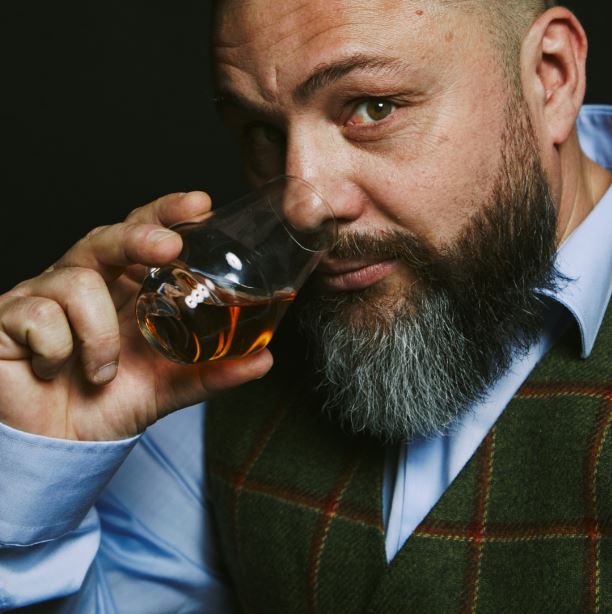[:it]A chat about whiskey with Marco Maltagliati[:]

[:en]
Of ELISABETTA LUGLI
MT Magazine's journey to discover whiskey began with an interview with Walter Gosso who told us about the origins and varieties of this distillate with its ancient charm and unique taste that is created thanks to long, sometimes very long aging in beating. To delve deeper into the topic we spoke with Marco Maltagliati, a great expert and enthusiast on the subject.
Here's what he told us:
Marco, how did your passion for whiskey arise?
Mine is a passion that came true in 2019, when I founded Dream Whiskey with my partner Federico Mazzieri. It is a company created to discover spirits in 360, and it starts with Scotch, proposing a different approach than usual. We are selectors and bottlers of Scotch: in Scotland we choose Single Cask, single barrels. The entire process up to bottling takes place on Scottish soil. In our headquarters, which is located in Milan, there is also a room where we organize a real whiskey salon.
Tell us what the approach to whiskey should be like in your opinion: how did you set it up?
The idea is to propose a less technical, more sensorial, emotional and personal approach. There are very specific rules, but it's good to be less technical: whiskey is made by people. Ours is a starter pack that can be defined with three words: smell, taste, alcohol. Smell because it is the most important sense. It guides us, changes our mood, makes us remember... We Italians are used to a very broad taste-olfactory pyramid, and this is an advantage. Alcohol because inside whiskey alcohol sometimes represents a wall at the entrance, but it shouldn't: the real container of whiskey is the alcohol, not the bottle. This is because all the scents and all the aromas are preserved inside the alcohol. Alcohol preserves, in general.
The taste of Scotch whisky: can you tell us how it is born, where it comes from?
In Scotland whiskey becomes good for many reasons: one is slowness. The source water used in the fermentation phase also counts, because it gives different aromas. Then the climate: in Scotland the barrel does not dehydrate. It is distilled with onion-shaped stills with discontinuous double distillation. Double, because in the first the Scotch is a distillate of barley beer, without the addition of hops. In the first still it has an alcohol concentration ranging from 8-9 to 25-26 degrees. In the second, however, there is the cutting of the head and tail: in the head there is harmful alcohol and in the tail unpleasant alcohol. You only keep the heart: the emotionality, the ancestral part. Thus we reach more or less 75 degrees and this new liquid obtained, which is called new make, is put into the barrel. The barrels used are not virgin, they have previously contained something, another spirit: be it sherry, port, bourbon or wine. They are regenerated by carbonizing them inside, to open up the tannins in the wood. Furthermore, alcohol in Scotland is good because the climate allows its bad part to evaporate.
How does this evaporation of alcohol occur?
There is a barrel lung effect: when it is cold the liquid contracts, but when it is hot it expands and penetrates the wood of the barrel. When the liquid contracts, air enters the barrel and brings with it aromas. When it expands, the good part remains trapped in the wood, another part evaporates. It's called "angel share": the part of whiskey that evaporates every year, around 3%, and which the angels take back, because they gave it away but want some of it for themselves!
Tell us about blended: what do you think?
Blended is not a bad concept: it is a more balanced whisky. Assembling different barrels from different distilleries is a real art, in Scotland there are masters of this practice. Among blended products there are really good products, I'll give you an example: Black bull. I tasted the one aged 40 years, very good.
What is the best way to taste whisky?
The right way is to be happy: you can't lie to Scotch whisky, it's a living product. Being alive, there is no right time for him, you have to be happy because you can't lie to him, if you are sad or angry and drink whiskey, your sadness or anger will amplify. Whiskey is not drunk to forget but to remember.
Whiskey and pairings, whiskey and mixing: what do you think?
I don't believe in pairing food and whisky. But I say yes to small bites: finger food, desserts, raw fish. Combinations can be made in this way. As regards the tasting temperature, we must take into account the fact that ice ruins: you can put the whiskey in the fridge, then using a glass at room temperature. The serving temperature must be between 13 and 18 degrees. In Scotland from the producers you drink it at 10 degrees.
As for mixing, whiskey has always been in the world of bars: a must of the past was scotch and soda. However, we need to start from a precise concept to make a good drink with whisky: too many things shouldn't be added, it's about creating simple drinks capable of enhancing the taste of Scotch. It goes to remove, not to add, the barman must be capable. Rob Roy, Old Fashioned, Highball: here are some simple drinks that work well. Or a nice Manhattan prepared with scotch, why not!
[:]
